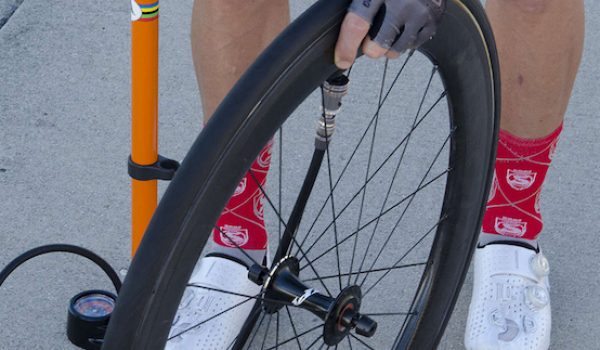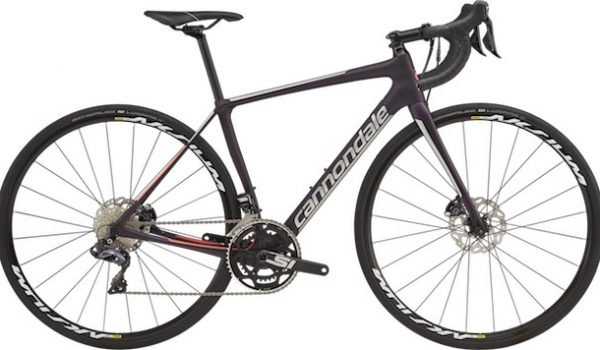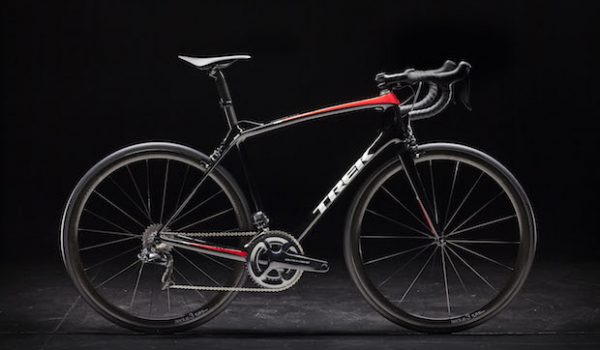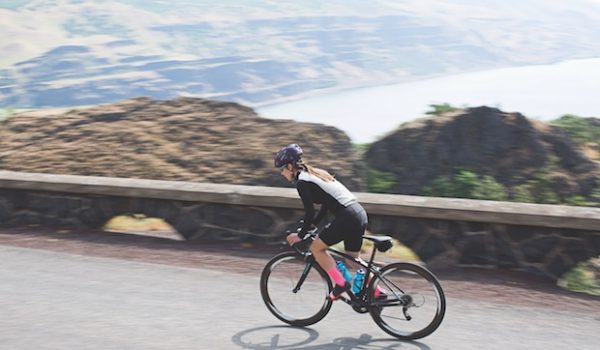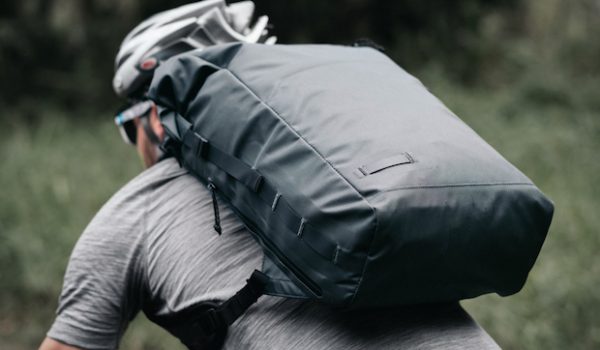
The Best Bike Helmets
Our expert testers perform extended comparative field tests on products using objective criteria like fit, comfort and ventilation to rate cycling helmets and determine the best for road and mountain biking.
We divided our reviews of the best helmets into Road Helmets and Mountain Bike Helmets.
Road helmets are comprised of cyclocross, race, triathlon, time trial and casual city or commuter riding. They generally have a more aerodynamic design and generous ventilation. Since road helmets typically forgo visors, they are also more lightweight and offer better vision when in the riding position.
Mountain Bike helmets include downhill, cross-country, race and enduro. They generally do a better job of ventilation at lower speeds, have visors and considerably more head coverage in the back, depending on the price point. Downhill helmets offer full-face protection for gravity and park riding.
We have broken down the bike helmet selection process to seven important criteria to consider that will help you find a helmet that fits you.
How to Select the Best Bike Helmet For You
The Best Bike Helmets by: Marie Malinowski
The rule of thumb is that you should select a helmet based on the type of riding you do. Are you riding on trails or the road? Are you an aggressive racer or just enjoying the day on two wheels? Do you put in more than 100 miles of riding in a week’s time? Or a day? Is tooling around town occasionally more your style? Are you strictly a bike commuter? Gravel grinder? Asphalt?
While it’s true that there are differences between road and mountain biking helmets, the reality is that almost any helmet, as long as it fits properly, will work. But let’s start by looking at the differences between the helmets.
- Mountain bike helmets: These helmets include the disciplines of cross country, enduro and downhill riding; generally rougher riding conditions on dirt. They have more rear coverage than road helmets because they’re designed to protect the head in a fall backwards. They typically have visors and their ventilation is designed to work at lower speeds. The most distinguishable of mountain bike helmets is the full-face helmet for downhill riding. In downhill riding, the speeds are higher and the impacts harder so full-face protection, chin guards, extra padding and wrap-around protection are needed.
- Road bike helmets: These helmets are intended for riding on paved or relatively smooth surfaces. They are lower in weight, have a more aerodynamic design and ventilate best at higher speeds. To save weight and ensure unobstructed views while in aggressive riding positions, they generally do not have visors. Commuter riding helmets are also included in this category.
Now let’s dive deeper into the type of riding you do to help get the helmet selection process started.
Mountain biking
- Trail/Cross-Country (XC) Riding: This is the most common discipline of mountain biking. Cross-country cycling is defined by the terrain on which it is performed. XC courses and trails consist of a mix of rough forest paths, purpose-built singletrack and smooth fire roads. Trails are generally “easy” or “intermediate” but can certainly include “expert.” The emphasis is more on endurance than technical prowess.
- All-Mountain/Enduro Riding: In this discipline, the terrain is rougher and there are challenging features such as rock gardens, log piles and low to moderate drops and jumps. The more advanced riders pursue both steep technical descents and high incline climbs. The emphasis is on endurance, core strength and balance, bike handling skills and self-reliance.
- Downhill Riding: This discipline of mountain biking includes very steep descents and rough terrain. Courses include large jumps (as in 20 feet or more), drops up to 10 feet or more and are rough and steep from top to bottom. These trails are usually found at ski resorts and are lift-accessed during summer months. Because of their extremely steep terrain, downhill is one of the most dangerous cycling disciplines. In addition to a helmet, a downhill rider often uses body armor (knee pads, elbow pads and neck protection), goggles and heavy-duty gloves. The emphasis is on balance, bike handling skills and pluck.
- Freeriding: Many aspects of freeriding are similar to downhill riding, with technical and very steep sections. The main distinction, though, is that anything goes in freeriding. You make your own trails or choose the most “creative” line to get you airborne and throwing in tricks mid-air. A freerider may often ride a very narrow wooden plank raised as many as 25 feet above the ground, drop off of cliffs or raised platforms. In addition to a helmet, a freeriders sometimes use body armor (knee pads, elbow pads and neck protection). The emphasis is on performing tricks or stylish riding stances while airborne.
If your style of riding fits into the descriptions above, we recommended that you buy a mountain bike helmet.
Road Riding
- Long-Distance Road Riding: This is arguably the most widespread form of cycling, and it includes racing and touring. As the name implies, road riding is done on asphalt roads. Cyclists are usually expected to obey the same rules and laws as motor vehicle drivers. To some road cyclists, 25 miles is long-distance, while to others, anything under 100 miles isn’t. There’s no specific measurement. The emphasis is on safety, speed and endurance.
- Gravel Riding (aka gravel grinding): Gravel riding is riding on surfaces such as gravel, dirt, some singletrack trails, and maintenance or fire roads. Distances can vary between 50-150 miles or more. The emphasis typically is on adventure and discovery more than speed.
- Commuting: Using the bicycle to travel from home to a place of work or study. Surfaces are smooth asphalt or concrete, distances are anywhere from down the block to the corner store to 25 miles. Riding is done on bike paths, dedicated bike lanes or urban streets. As with roadies and gravel grinders, commuters are expected to obey the same rules and laws as motor vehicle drivers. The emphasis is on safety.
- Casual: Rides are short and infrequent and done on asphalt bike paths, mountain bike trails, hard-packed dirt roads or on gravel. The emphasis is on comfort, ease, and may be a social outing.
If your style of riding fits into the descriptions above, it’s recommended that you buy a road bike helmet.
How to Select the Best Bike Helmet For Your Head
Now that you’ve identified your riding style, it’s time to select the best helmet for your head.
Your bike helmet is the single most important item you can wear while cycling. According to the Insurance Institute for Highway Safety, in a majority of bicyclist deaths, the most serious injuries are head injuries. Head injuries range from mild – where you don’t lose consciousness but have a whopper of a headache for several days – to severe, where you lose consciousness and wake up with permanent behavioral and cognitive problems. The most severe injury, of course, is death. While wearing a helmet reduces the risk of injury, not all helmets are created equal.
Follow the three steps below to select the best bike helmet for your head:
1. Measure Your Skull Circumference
When choosing a bike helmet, you’ll need to know the size of your skull. Take a flexible tape measure and wrap the largest portion of your head. Most helmets are sized in centimeters so be sure to convert your head size from inches to centimeters.
2. Look for the Helmet Size That Matches Your Measurement
Like shoes, helmets should be tried on before you buy. Even if you know your helmet size, it will inevitably fit differently depending on the brand and model you choose. The most important aspect is fit. The assumption here is that you have already selected a specific brand and model. Sizing circumference parameters in helmets are generally:
- Extra-small: below 20 inches (51 cm)
- Small: 20–21.75 inches (51 cm–55 cm)
- Medium: 21.75–23.25 inches (55 cm–59 cm)
- Large: 23.25–24.75 inches (59 cm–63 cm)
- Extra-large: above 24.75 inches (63 cm)
If you find that your skull measurement puts you in between sizes, the recommendation is to opt for a smaller size. If the smaller size is uncomfortable, try different brands and models. Some experts suggest trying a larger size and mitigate any helmet wobbliness with a beanie or cycling cap.
3. Select the Correct Fit and Make Appropriate Adjustments
To ensure optimal protection, your helmet should meet all of the following criteria:
- Feel snug, but comfortable. If your head feels like it’s in a vice, it’s too tight.
- Sit evenly on your head (not be tilted back on the top of the head or pulled too low over your forehead).
- Not move in any direction, back to front, up and down, or side to side.
- Have a secure buckle to keep it from moving or falling off on either a first or second impact. So if you are riding your bike and collide with something (first impact), the helmet will still be firmly in place if you then fall onto the pavement (second impact).
- Be easy to adjust and fit properly without a lot of adjustments. And once adjustments have been made, they should stay put.
- The chin strap should not press uncomfortably into your throat. If it does, try another helmet model or brand.
Consider Helmet Construction Materials
As you read through the reviews and tests at Gear Institute, you’ll come upon the following terminology used in the construction of bike helmets. Below are the details behind the materials, provided from helmetfacts.com:
Acrylonitrile Butadiene Styrene (ABS): ABS may be the most common helmet outer shell material in the world – thanks to its affordability, ease of manufacturing, strength and reliability. As a thermoplastic, ABS can be heated to 221 degrees Fahrenheit, melted and injection molded or 3D printed into finished shapes. This is why ABS debuted in helmet shells during the 1960s and is still popular with helmet manufacturers today. Once cooled, there is usually little required in the way of hand finishing the ABS product, which reduces labor costs. That said, ABS is also easily machined, sanded, glued and painted, which makes it a popular material for both prototype and finished products. From a performance standpoint, ABS is attractive in that it resists high impact, functions well in cold weather and is, simply put, quite tough.
Composites: Technically speaking, any product that combines multiple materials is a composite, but when people refer to composites in the helmet world, they are generally referring to helmet shells that are constructed from sheets of glass, carbon or Kevlar fibers that have been fixed within a matrix of polymer resin. While glass, carbon and Kevlar fibers all possess different qualities (carbon fibers are, for instance, generally stronger and stiffer than fiberglass), composite shells and components can be “tuned” to specific needs – say lighter or stiffer – than ABS or polycarbonate thermoplastic helmet shells. Composites, however, also require a great deal of labor and the source materials can be expensive. Whereas ABS and polycarbonate can be inexpensively molded and demand little in the way of hand finishing, each layer of a composite must be precisely laid up by hand before being molded. Once the composite shell emerges from the mold, it often requires sanding and other detail finishing. For that reason, helmets featuring composite shells are often much more expensive than their polycarbonate counterparts.
Expanded Polyactic Acid (E-PLA): EPS is very attractive to helmet makers – the crushable foam is lightweight, yet offers excellent impact protection. One downside, however, is that EPS is petroleum based and will not decompose after it’s been retired. Its environmental footprint, so to speak, is heavy. E-PLA is a relatively new addition (2016) to the world of helmet liners. This single-impact, crushable foam functions similar to EPS and can perform to the same safety standards, while being much friendlier to the environment. E-PLA is plant based (it’s derived from corn, at this time) and biodegradable. E-PLA has been used for some time in packing materials. In order to be utilized in helmets, it has been reformulated to provide better impact attenuation and to degrade very slowly – helmet owners expect several years of safe use from their helmet. E-PLA is currently being used in a small number of cycling helmets and could potentially replace EPS in more types of helmet liners in the near future.
Expanded Polystyrene (EPS): EPS is a crushable foam more commonly known as Styrofoam. The EPS used in helmet liners is of a higher quality than the EPS used in disposable cups, coolers and packing popcorn, but the process of making a helmet is fairly similar. EPS is created by placing small (.5 to 1.5-millimeter) polystyrene beads into a mold and applying steam and a blowing agent called pentane. The polystyrene beads then expand up to 40 times their original size, fusing together into a solid mass that assumes the shape of the mold. EPS is lightweight, effective across a wide range of temperatures and conditions, and effective at reducing the amount of energy transferred to your head during an impact. EPS accomplishes that energy reduction by collapsing during the impact, converting some of the energy into heat and slowing the transmission of energy. A key advantage of EPS is the reliability of the molded part to deal with impact energy over a wide range of conditions. Another advantage is that EPS is not damaged by some of the common chemicals that can affect other materials (although it can be damaged by some chemicals). Additionally, EPS maintains its protective characteristics over time, (within limits, of course).
Once those expanded polystyrene beads collapse, however, they do not regain their shape (or ability to absorb energy); for that reason, EPS is strictly suited to single impacts. This is why helmets with EPS liners should be replaced after a crash. Similarly, helmet owners should be vigilant about not dropping or knocking their helmet during daily use. Manufacturers can precisely “tune” their EPS foams by adjusting foam density to provide just the right amount of impact attenuation needed for a given application. Harder EPS foams work well to reduce energy transfer during high-speed impacts. Softer EPS foams are better suited to slower-speed, lower-energy impacts. Several helmet brands have created dual-density EPS foam liners that combine hard and soft EPS foams, which may help protect riders in some accidents.
Polycarbonate: Polycarbonate is a thermoplastic and easily melted and molded into final products, such as helmet shells, visors and face shields. Polycarbonate is highly impact resistant, which makes it the material of choice for products such as bulletproof glass and safety glasses. Its rugged nature has also led to its use in smartphone cases, compact discs and a wide range of other consumer products. Polycarbonate is stronger than ABS, the other popular thermoplastic frequently used to construct helmet shells, but also more expensive and therefore tends to be featured on more expensive helmets. Helmets using polycarbonate typically feature slightly thinner shells, creating a more streamlined look with the same degree of impact resistance and performance.
Koroyd: Koroyd is composed of masses of co-polymer tubes that are thermowelded together and shaped (in the case of helmets) into a honeycomb-like structure that can be integrated into helmet liners. Upon impact, the Koroyd tubes collapse and, like EPS foam, slow and reduce the transmission of energy to the head. As used in helmet liners, Koroyd is a single-impact product. It’s currently seeing use in a few cycling helmets in tandem with EPS foam.
Consider Helmet Safety Standards & Certifications
At a minimum, bike helmets sold in the U.S. must meet the Consumer Product Safety Commission standard (CPSC). Full-face downhill helmets must also meet ASTM-F1952, a more rigorous safety standard, which includes tests on the chin bar. The CPSC standard sets a mandatory baseline for strap strength and the helmet’s ability to withstand and mitigate impact, although some helmet manufacturers even take the extra step of partnering with SNELL, an independent non-profit that tests the integrity of helmets in every potential crash and impact situation. A SNELL sticker on a helmet means it has gone through an extended and vigorous test of multiple impacts from multiple different angles and that the manufacture employs high-quality control procedures.
You may also see helmets with MIPS liners, as many brands have now adopted their use. MIPS (Multi-directional Impact Protection System) is a liner that is separated from shell by a low friction layer. When a MIPS-equipped helmet is subjected to an angled impact, the low-friction layer allows the helmet to slide relative to the head. This redirection of the rotational energies and forces transferred to the brain decrease head injuries.
Although MIPS is rapidly becoming a common add-on for bike helmets, it’s not without its controversy. Some question whether it really works or is just another bike industry marketing gimmick? MIPS publishes their research and test results on their website, so according to MIPS, it works. But some naysayers and critics believe some safety claims are inflated and are demanding more data on MIPS claims. Much of this controversy revolves around what MIPS is designed to do in a crash versus what really happens in a crash (and to what extent crashes can be simulated in controlled laboratory tests).
Helmets move in a crash, and there’s no standard established on how tight a helmet must be for the MIPS liner to engage during a crash. When looking closer at a lot of MIPS-equipped helmets, you may see that the MIPS liner attaches to the EPS shell in places that are not lined with the low friction material. Could this limit the effectiveness of the MIPS liner? Research continues but in the interim, choosing a helmet with MIPS is a smart choice if it’s offered in the model that fits your head and budget.
Men’s Helmets vs Women’s Helmets
While men tend to have larger skulls in comparison to women, skull shapes are not gender-specific. A woman with a skull size of 58 cm will fit into the same size helmet as a man with a 58 cm sized skull. Women should not be compelled to buy a women’s helmet unless it’s simply a better fit than any other helmet tried on.
Manufacturers market “women-specific” helmets with more feminine colors (pinks, lavenders, baby blue, etc.) and/or ponytail ports. That is the only difference between men’s, unisex or women’s helmets.
Consider Price
All helmets sold in the U.S. must have at least the Consumer Product Safety Commission (CPSC) standard. That means that even the $20 helmet on the shelf at Walmart meets this standard. Is there a safety standard difference between the $20 helmet and, say, the $320 POC Octal AVIP MIPS? No. The CPSC standard is the same for both helmets. Although spending an additional $300 nets you a helmet with additional safety features, improved fit, enhanced comfort and better looks.
However, you can find a MIPS-equipped helmet for considerably less than $320. Again, proper fit of the helmet is most important.
Helmets Aren’t Forever
Because the foam material in the helmet is designed to crush to absorb the impact energy during a fall, it can’t protect you again from a subsequent impact – even if it looks like it could. Indeed, bike helmets are designed to protect against a single severe impact, such as a fall onto pavement.
Hopefully these steps have helped you determine exactly what you are looking for in a cycling helmet. Now comes the fun part: finding the right helmet for your head at a price you can afford and then putting it to use on the trails and roads.
Read our comparative reviews to learn which helmets are the best on the market.
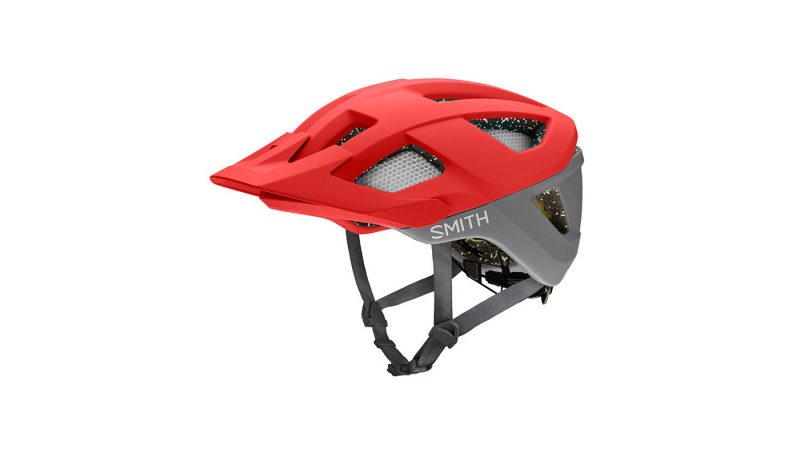
The Smith Session provides an impressive amount of protection with outstanding extended rear and side coverage at an affordable price point. Adjustability is quick and easy and the straps are very lightweight. However, ventilation comes up short on hot and humid days due the combination of the MIPS and Koroyd technology.
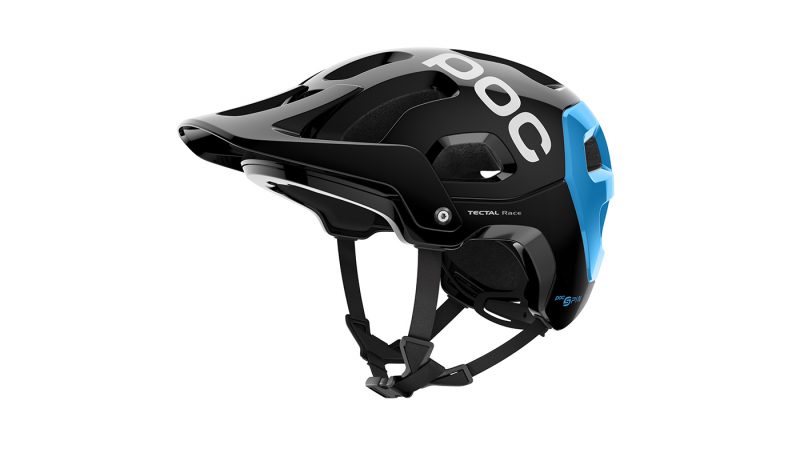
The POC Tectal Race SPIN is an aesthetically-pleasing helmet that provides the most generous rear and side coverage of all the helmets in the test. The addition of SPIN, POC’s own technology, reduces the force applied to the head during an rotational impact without adding weight. However, its adjustable visor is labor-intensive to adjust.
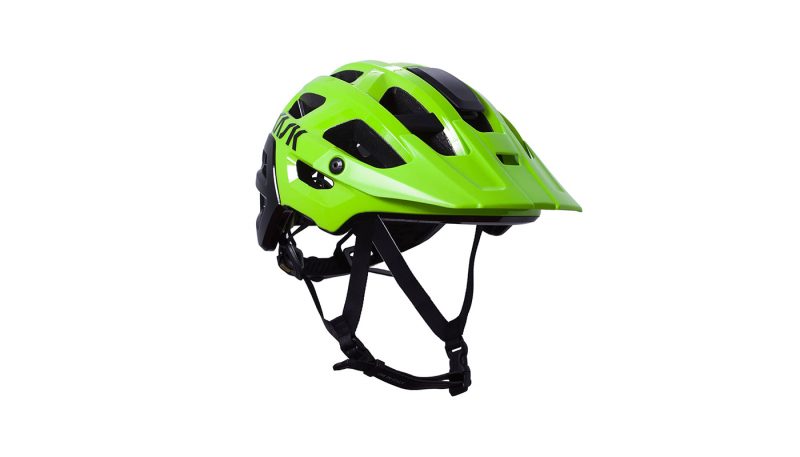
The Kask Rex provides excellent extended rear and side coverage without being overly heavy. With 20 large air vents, it provided the most thumbs-up from the testing team for ventilation. Although it delivers a secure fit with its factory settings, the side straps offer no adjustability.
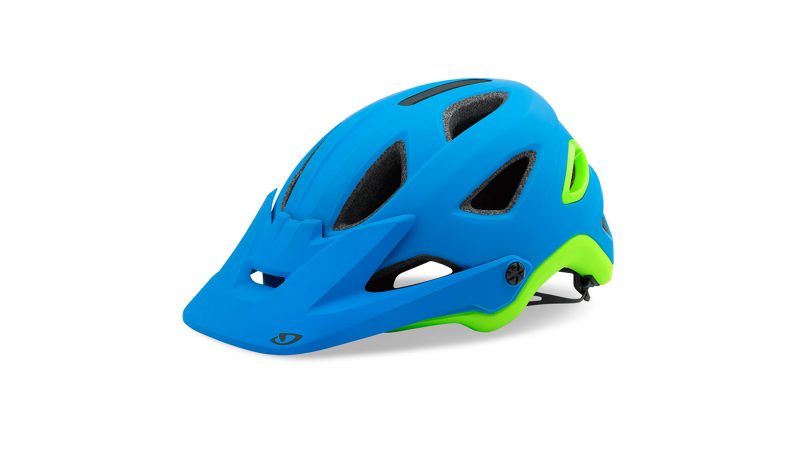
The Giro Montaro MIPS provides good rear and side coverage. Fit is outstanding with the Roc Loc Air Fit System that fine tunes a customized fit. However, its minimalistic padding saturates quickly with sweat on hot and humid days and may not be conducive to comfortable all-day rides.
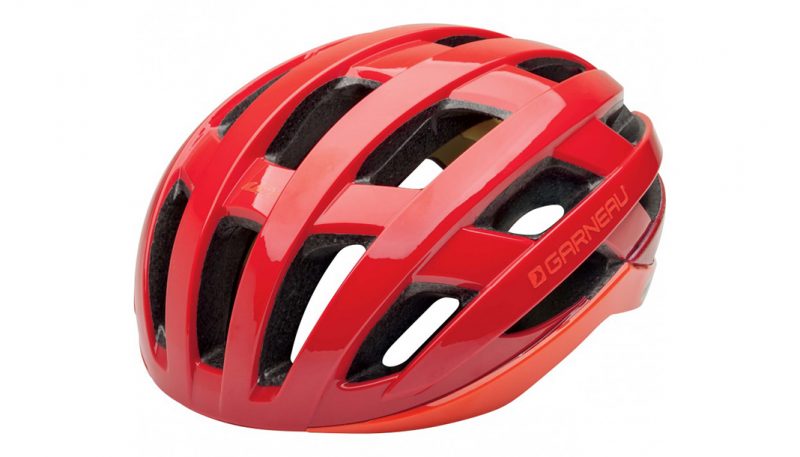
The Louis Garneau Heros RTR MIPS is a comfortable helmet with good rear and side coverage. Adjustability is easy and precise. However cyclists may find that the chin strap sits closer to their throat than under the chin.
Best for: The Cool- and Dry- Climate Rider
Smith Overtake MIPS
Bike Helmets, Biking & Road Cycling Helmets
The Smith Overtake MIPS provides good extended rear and side coverage. Adjustability is quick and the straps are very lightweight. The addition of Koroyd technology enhances safety on impact however the internal helmet padding is thin and sparse.

The Specialized Airnet MIPS is a lightweight helmet with outstanding rear and side coverage. Although it delivers a secure fit with its factory settings, the Tri-Fix web splitter is a double-edged sword. The side straps will never touch or chafe ears however it offers no adjustability.
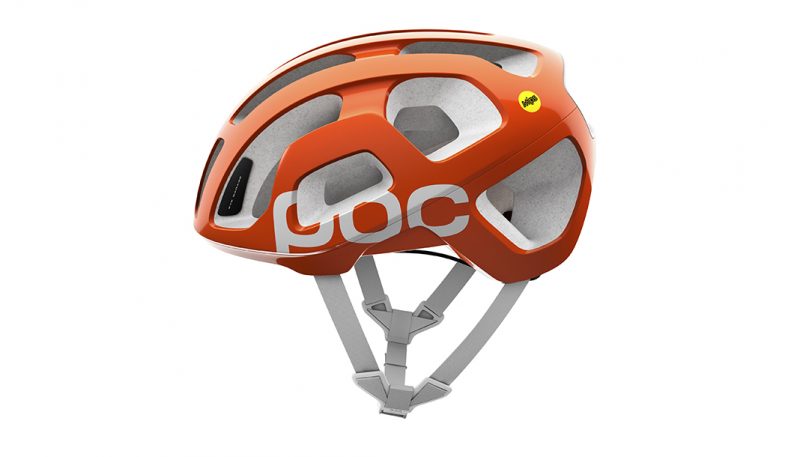
The POC Octal AVIP MIPS is a helmet with outstanding rear and side coverage. Safety goes beyond the helmet with the addition of the POC ICE tag, which allows medical personnel to scan and obtain critical medical information to assure the best care. However, the minimalistic padding compromised fit and comfort.







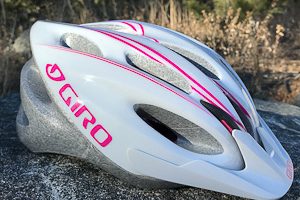
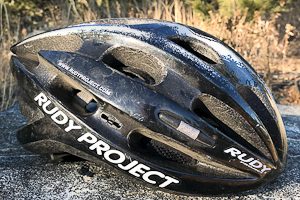
 88
88 



